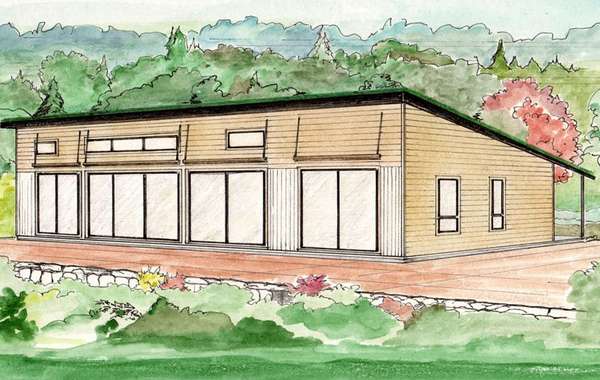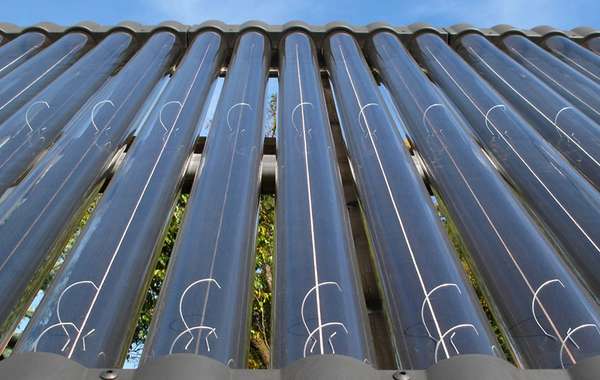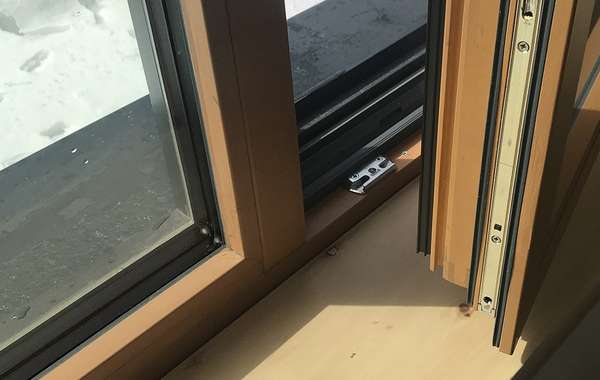First published in ecoHouse Canada
What does the R value of insulation mean?
The thermal performance of wall assemblies and insulation products has long been characterized using R-value, a metric which describes thermal resistance. While R-value is useful, it doesn’t tell the whole story about heat flow through building enclosures such as walls and roofs.
Recently, a study by RDH Building Engineering Ltd. has shown that real world thermal performance depends on a large range of factors including temperature, age, thermal mass, and surface reflectance.
Typically, insulation R-values are measured at a mean temperature of 24°C [75°F] and a temperature difference of 28°C [50°F], but this doesn’t necessarily match with the temperatures experienced in service. Roofs, for example, can be expected to experience a range of temperatures from -10°C [14°F] to over 80°C [176°F], even in a relatively mild climate.
To assess the impact of temperature on two types of insulation [polyisocyanurate and stone wool], measurements of R-value per inch were made over a range of different temperatures more characteristic of in-service temperatures. As shown in Figure 1 below, these measurements found that the R value of both insulation types change with temperature, with the polyisocyanurate [polyiso] demonstrating a more significant response.
 |
|
|
The polyiso insulation provides close to its rated R-value when measured at 24°C [75°F], but at both lower and higher temperatures the performance decreases dramatically. Importantly, it is at these more extreme temperatures [i.e. farther away from interior temperatures] where the performance of the insulation is most needed, and yet it is at these temperatures where it performs worst.
Notably, the R-value of the polyiso also depends on the age of the insulation. This well-known effect is caused by gasses from the manufacturing process slowly diffusing out of the insulation as it ages, and is commonly captured using the long-term thermal resistance [LTTR] metric, but also exaggerates the effects of temperature.
A recent study by RDH which looked at conventional roofs found that the thermal mass of the insulation, in addition to the assembly itself, can also impact in-service heat flows. Thermal mass stores heat energy and provides a buffering effect. For example, a roof insulated with stone wool takes longer to heat up when exposed to the sun in the morning and longer to cool down in the evening than would a roof insulated with a less thermally massive insulation.
This buffer effect can reduce the temperature difference across enclosure assemblies and reduce in-service heat flows.
These changes in in-service performance as a result of temperature, age, and thermal mass can significantly impact the actual heat flow through a building enclosure in comparison with what would be predicted by considering only the rated R-value.
The effect of exterior home colors on energy performance
The properties of the insulating materials are not the only factors which affect in-service heat flow through building enclosures. For example, the exterior colour [i.e. solar reflectance] of the surface of an assembly can have a significant impact on the surface temperature, which in turn can impact the amount and direction of heat flow. For example, dark roofs typically absorb more solar energy than do lighter roofs. On a sunny day with 25°C [77°F] ambient air temperature, three adjacent black, grey, and white roof membranes on the same building [see above photo] were measured to have maximum surface temperatures of approximately 75°C, 65°C, and 50°C [167°F, 149°F, and 122°F] respectively.
While typically in cold climates we think of increased R-values as preventing heat loss from the warmer interior to the colder exterior, in some cases R-value can actually prevent potentially beneficial heat gain from a warm surface, such as a roof. The optimal balance of preventing heat loss and allowing heat gains will depend largely on climate, assembly arrangement, and building use. In the future it may be possible to design optimal surface colours [i.e. reflectance] and insulation combinations to minimize building energy consumption, though increased insulation will probably be the best option in most cases.
Calculating the energy consumption of buildings
While insulation R-values are important, what really matters is energy consumption. To assess the impact of different roof insulation types on whole building energy performance, energy modelling was conducted of a building with roofs having the rated insulation R-value required by the ASHRAE 90.1-2010 energy standard for each climate zone.
In addition to the rated R-value, this modelling then also took into account the temperature dependent R-values of stone wool and aged polyiso insulation, their different thermal masses, and the colour of the roof surface. As shown in Figure 2, this analysis demonstrated how the impact of each of these factors on the heat flow through enclosure assemblies subsequently affects building energy consumption, with different combinations providing optimal performance depending on the climate.
 |
|
|
Overall, as big picture concepts of thermal performance and energy efficiency are addressed, it will become more important to consider the finer points of insulation product and assembly performance as these considerations can impact the energy performance of buildings.
Now you know about which insulation is best for different applications. Find more pages about sustainable construction below and in the Ecohome Green Building Guide pages.
Discover all the benefits of a free Ecohome Network Membership here - promote your business and get access to discount pricing on select building materials! |
Lorne Ricketts is a Building Science Engineer [EIT] with RDH Building Engineering Ltd. and has significant experience with the thermal performance of building enclosures and insulation products. He was the lead investigator on a recent project by RDH which assessed the thermal performance of conventional roof assemblies and is actively involved with several research and new construction projects.
Image and diagrams courtesy of RDH Engineering LTD.

































Comments (0)
Sign Up to Comment